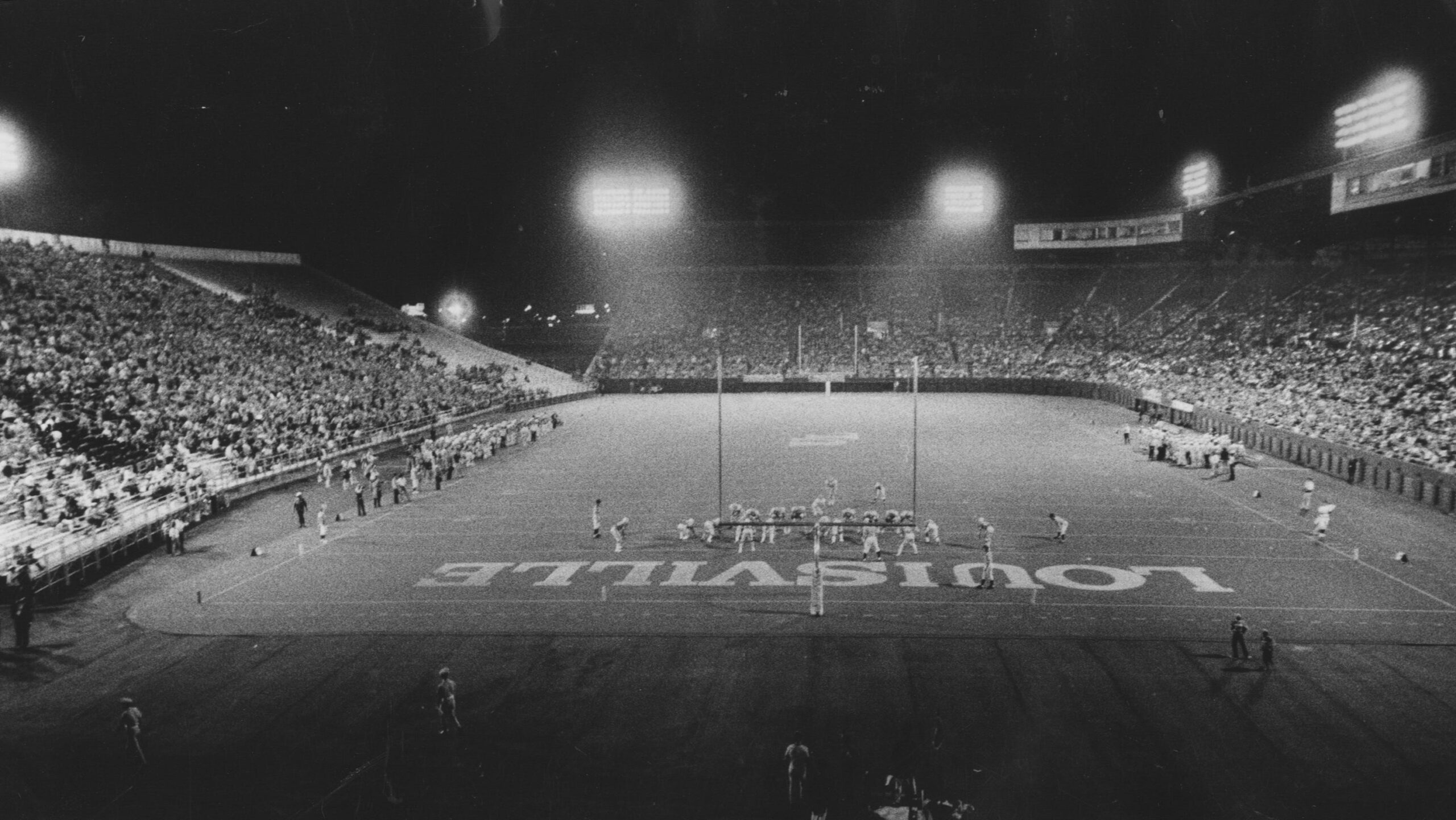The sixth selection show of the newly minted College Football Playoff has come and gone, and for the sixth straight year, a “Group of Five”(G5) school was not selected to compete in college football’s pantheon. Although none were remotely expected to reach the field of four teams, the question creeps into the mind of any G5 school or fan… how do we reach that mountain top?
Reaching this coveted mountain top means joining a Power Five (P5) Conference. The process is quite challenging, requiring a unique level of commitment from administration, alumni and a community to make the transition viable long-term.
The conference realignment saga of the late 2000s has to calmed to a murmur. The next round likely begins in 2021 or 2022 as the next round of media rights negotiation begin to peculate prior to their 2023 and 2024 expiration dates. The next realignment in college athletics will have a new playbook as the landscape of media and screen usage has changed drastically since the 2007 advent of the Big Ten Network. **cough, hopefully no more Rutgers to Big Ten-type moves**
Success Stories
To frame making the jump from a G5 or “Midmajor” program, understanding how other programs have already made the jump is important.
Louisville

Of schools to make the jump in modern history, the largest success story remains to be the University of Louisville. Once a member of the Missouri Valley Conference, playing the likes of Drake and Evansville, Louisville is now a member of the Atlantic Coast Conference (ACC) following stints in the American Athletic Conference, Big East Conference, and Conference USA in their division one tenure.
Coupled with a solid stable of football and basketball coaches, continual facility upgrades, and the ability to call themselves “the only show in town,” the University of Louisville has created an athletic brand that resonates across the college athletic landscape, which includes major bowl appearances, conference titles, a basketball national championship, and appearances in the NCAA College World Series.
From playing in outdated venues including the iconic Freedom Hall and original Cardinal Stadium, to state of the art facilities today in the KFC “Yum” Center and new Cardinal Stadium, the University of Louisville has capitalized on support from the City of Louisville, both in massive upgrades and continual high attendance marks. Rarely do you find an empty seat in their venues, or in sports bars when their games are on television.
Utah

In 2010 the Pac Ten Conference, led by Commissioner Larry Scott, led a bold movement to expand the Pac Ten conference from ten members to sixteen members, including six members of the current Big 12 conference. This movement led the University of Colorado to accept membership in the Pac Ten conference (soon to become Pac 12 conference) while no other Big 12 members followed suit. The newly formed Pac 12 conference then welcomed the Mountain West Conference (MWC) member University of Utah to be its 12th member.
The move to the Pac 12 Conference allowed football progress by former coach Urban Meyer, along with current head coach Kyle Whittingham to catapult success in the Mountain West Conference to the Power 5 level in the Pac 12. Prior to this move, the state of Utah had no Power 5 conference affiliated members. The Unviersity of Utah has solidified itself with both athletic success and sustained attendance success since this move.
“The only show in town”
Louisville and Utah are essentially the only show in town. Unlike many “city” schools which call the University of Louisville a peer, the Cardinals energized the City of Louisville to rally around their program, both with fan support and political support leading to facility upgrades. Unlike neighboring Cincinnati, the University of Louisville has no NFL or MLB teams to compete with during fall months.
Although Utah shares the stage with Brigham Young University (BYU), their ability to grow a large fanbase in the rapidly growing Salt Lake City Metropolitan Area provided a sustainable model for success and viewership moving forward.
Made the Jump
(and either fell short, or the jury is still out)
South Florida

South Florida had a momentous rise to the top of college football under head coach Jim Leavitt. In less than a decade, their program went from offices in a trailer next to a football field to being ranked the #2 program in the nation in the (former) Big East Conference.
Despite this success, South Florida rarely filled the lower bowl of Raymond James Stadium, home of the Tampa Bay Buccaneers. As a result, as the Big East Football conference collapsed, South Florida was unable to find a Power Five Conference suitor and will likely remain in the Group of Five.
Texas Christian (TCU)

This is a tough one. TCU has done literally everything on the football field to warrant Big 12 membership, which it gained in 2012. Since 2012, TCU has been ranked in the Top Ten twice, including a NY6 bowl (as the result a College Football Playoff snub).
Despite being one of the most successful programs in the Big 12 since their arrival, TCU still struggles to grab any sort of attention in the Dallas-Fort Worth Metroplex, where they are located. TCU has a very small alumni base compared to Texas, Texas A&M and Oklahoma, who dominate the sports scene in DFW and the region. Most sellouts taking place at the small (50,000) Amon G Carter Stadium take place when Texas or Oklahoma bring their own fans.
Cincinnati

Cincinnati has proven to be a program that can field an elite football program (went 12-0 in 2008) and fill a stadium. Nippert Stadium has been transformed into one of the cooler old venues in the sport, and the State of Ohio is tradition-rich in football.
However, that football tradition in the State of Ohio is dominated by the Ohio State Buckeyes. In addition to being located in the Buckeye State, Cincinnati is located two miles from the Cincinnati Bengals Stadium, and now an MLS team plays in their own stadium.
I couldn’t decide yes or no on Cincinnati, so I took it to my twitter followers:
Connecticut

I’m somewhat suprised Connecticut wasn’t invited to the ACC back in 2012, but here we are in 2019 and the University of Connecticut has floundered as a Group of Five school in the American Athletic Conference. Once a program that went to a BCS Bowl in the old Big East conference, UConn is now going independent in football, and joining the new Big East in basketball for the upcoming year.
Connecticut is an interesting case, as a powerhouse brand in college basketball, boasting numerous final fours and national championships. Their campus location in a very small town 15 miles east of Hartford, stadium location, and multiple basketball arenas pose interesting challenges for the university moving into the future.
Future Candidates
Based upon the success of Louisville and Utah, the following institutions make the most sense of being promoted to the Power 5 plateau.
Brigham Young

Brigham Young University (BYU) has done everything it needs to be at a Power Five level — even without the amount of revenue most programs need for high-quality coaches, facilities and media exposure. Lavell Edwards Stadium competes with any Power 5 stadium already in terms of crowd size, atmosphere and amenities. Despite the rise of the University of Utah down the road, BYU still remains a force in the Salt Lake City Metro Area.
San Diego State
I’d have never included San Diego State prior to the Chargers leaving. San Diego lived and died by the Chargers before their departure to Los Angeles. Now there’s a huge void in the city, a void which could really be filled if San Diego State was playing “big boy” football, especially in their new venue.
Boise State
The Boise Metropolitan Area continues to grow, but is still far below the threshold for professional sports. Couple this growing metro area with a great tradition and fanbase formed in Boise under Chris Petersen and now Bryan Harsin, and Boise State could be a major force in any league they join.
Memphis

Growing up, I always viewed Memphis basketball a “high major” school under John Calipari. They were constantly winning huge games despite their CUSA membership. Now, Memphis football is a force in the American Athletic Conference, and has played in some huge sellout games on national television already. Their metropolitan area has no professional football, and is currently in an area where the only major football teams (Arkansas, Ole Miss, Tennessee) are down.
Central Florida

The sheer number of students at Central Florida, along with being in a talent-rich recruiting state, tell me Central Florida could have a massive and immediate presence in a Power Five conference. When the Big 12 Conference debated expanding to fourteen teams, Central Florida was among the favorites, and could have really been a pivotal connection to the State of Florida for recruiting for Big 12 schools.
Unlike South Florida, UCF is located far enough from “pro- sport” markets like Tampa or Miami to dilute the potential fanbase. Central Florida may be the most likely, along with BYU, to eventually receive a Power 5 invite.
UNLV

UNLV doesn’t fit the mold of “only show in town” with the Raiders coming to town. However, UNLV’s new roommate has some pretty cool digs. They’d easily fit geographically into the Pac 12 and would be a super fun roadtrip for fans of other teams, but would they capture enough home fans?
The future for the “Group of Five”
The latest round of realignment was not kind to G5 or mid-major programs, as mentioned above — unless your school is Utah or TCU. Many former Power 5/6 schools like Cincinnati, South Florida and Connecticut (mentioned above) found themselves left without a chair when the music stopped.
In order to provide more of a tangible solution for schools in this situation, fans and alumni of these institutions need to hope for a nuclear option to the current alignment of conferences, whether that be six leagues with 12 teams each, or whether there be a promotion/relegation model, which would be even more unlikely.
Although the future may not seem bright for these possibilities, I’m sure fans of Louisville and Utah probably had their doubts in yesteryear as well. Schools like Rutgers were added to leagues for television market alone, and have been total duds in their new homes, so maybe the next round will correct that trend.
Time will tell…


